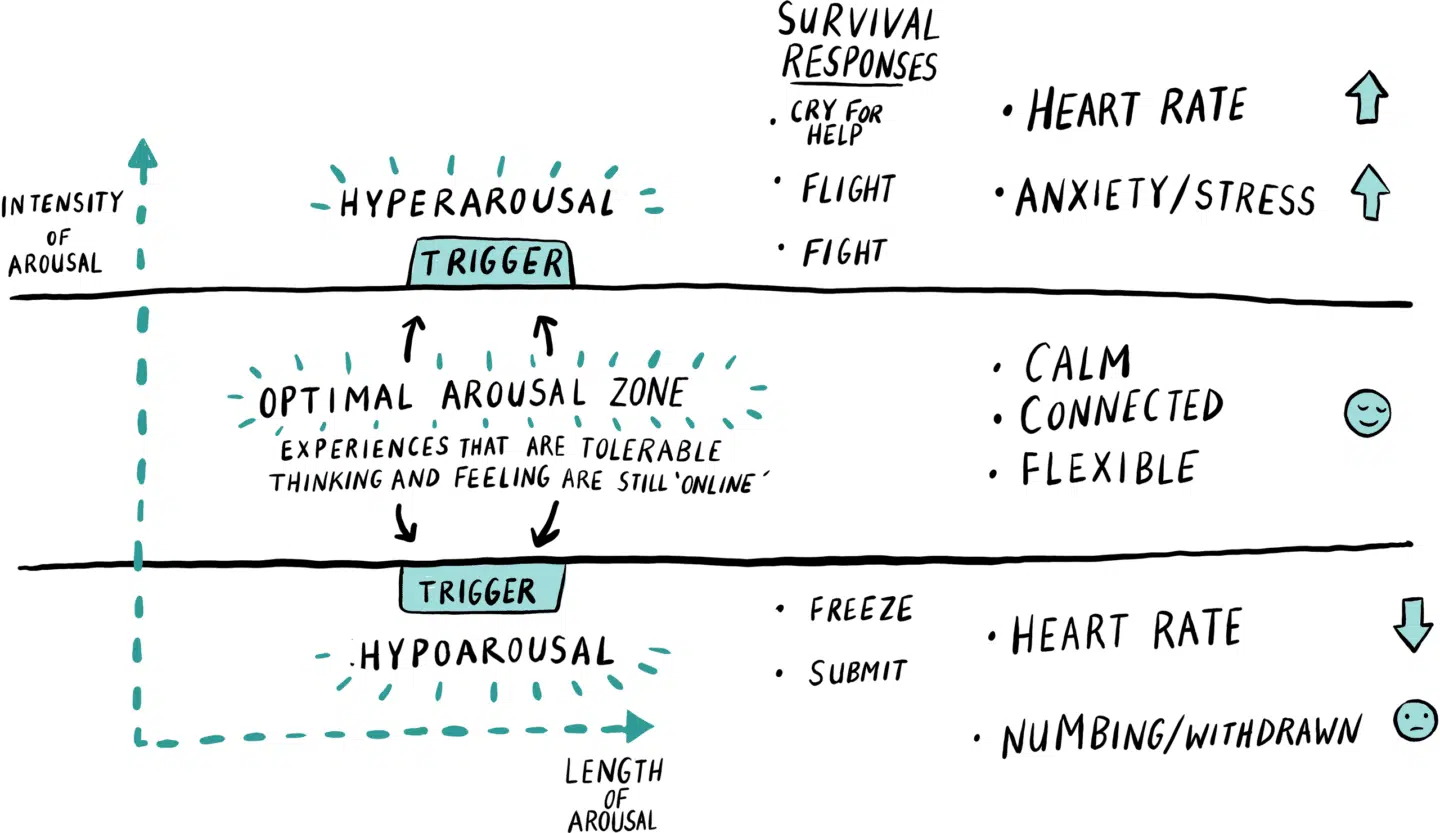The Window of Tolerance is the optimal zone of “arousal” in which a person can function and cope most effectively and is best able to respond to stressful situations. Every person’s Window of Tolerance is different. When in their Window, people can:
- Think more clearly
- Process information better
- Concentrate better
- Make more informed decisions
Your Window of Tolerance may become much narrower following chronic stress or trauma, meaning it becomes easier to get pushed out of your Window and into a state of over-arousal or under-arousal.

Survival responses
Hyperarousal
Over-arousal (also known as hyperarousal) activates the body’s fight-or-flight response to stress involving:
- Aggression
- Shortness of breath
- Increased heart rate
- Increased shakiness or muscle tension
Hyperaroused responses include:
- Cry for help: When your body detects a threatening situation and instinctively becomes prepared to defend itself
- Fight: When you’re angry or irritated and you engage in impulsive and/or aggressive behaviours
- Flight: When you feel denial or anxiety. This stress may cause you to evade, omit, or sabotage to escape a stressful situation
Hypoarousal
Under-arousal (also known as hypoarousal) can involve:
- Increased numbing
- Feeling withdrawn from your surroundings
- Feeling detached from your body or environment, or as though things around you aren’t real
- Not feeling in control of your body’s movements
Hypoaroused responses include:
- Freeze: Overwhelming stress can lead to a freeze response, which involves feeling emotionally detached or withdrawn from your environment
- Submit: This involves surrendering to the consequences of a stressful situation when your body feels too overwhelmed to fight or flee.
